Two-Day Introductory Beekeeping Course
$295 + HST
I am offering a TWO-DAY INTRODUCTORY BEEKEEPING COURSE. Our goal is to give people enough knowledge of bee biology, hive management, and bee pests and diseases to learn how to read a colony and respond appropriately to its needs while avoiding the common mistakes. Time will be split between the classroom and the beeyard. The classroom portion will involve equipment demonstrations and powerpoint presentations on a host of topics. In the beeyard sessions you will partner up and work your own colony to practice the skills learned in the classroom. Class sizes are limited to 8 students per instructor.
When: The course runs for two consecutive days on a Saturday and Sunday, and will begin at 9am and will finish around 5pm. It will be offered three times on the following weekends:
Saturday May 20th and Sunday May 21st
Saturday May 27th and Sunday May 28th
Saturday June 3rd and Sunday June 4th
Where: The course will be held roughly 15 minutes East of downtown Ottawa at my honey house near Carlsbad Springs, ON
What to Bring:
– A veil if you have one
– Paper and pens for notetaking
– A bag lunch
– Lots of questions
Agenda:
DAY #1
Demonstration: Basic Components of the Hive and Other Equipment
– Singles vs Doubles, Box Sizes, Frame Types
– Optional Equipment: Queen Excluders, Bee Escapes, Screen Bottom Boards
– Smokers, Hive Tools, Monitoring Tools, Gloves, Veils
Powerpoint Presentation: Bee Biology
– The Three Castes
– Lifecycle of the Bee
– Life of the Hive and Seasonal Cycles
Beeyard Session #1:
– Lighting a Smoker and Using Smoke Appropriately
– Opening and Working a Hive without Squishing or Agitating the Bees
– Recognizing Different Castes, Brood Stages, Cell types, Pollen and Honey Stores
– Stings and How to Deal with Them
Demonstration: Setting Up the Yard
– Choosing a Location
– How to Introduce a Nuc and Help it Build Up
– Moving Colonies
Beeyard Session #2:
– When and How to Add Honey Supers
– When and How to Harvest
– Feeding Colonies for Winter
– Wrapping hives for Winter
Demonstration: Extracting Honey
– Equipment Options: Extractors, Uncappers, Settling Tanks
– Processing Honey: Settling, Heating, Creaming, Comb Honey
– Processing Beeswax: Purifying, Candlemaking
DAY #2
Powerpoint Presentation: Varroa Mite Monitoring and Treatment
– Varroa Mite Biology
– Monitoring Methods
– Treatment Options
Beeyard Session #3:
– Sampling Bees to Assess Varroa Levels
– Practice Treatment Applications
Powerpoint Presentation: Other Pests and Diseases
– American Foul Brood
– Nosema
– Chalkbrood
Powerpoint Presentation: Identifying and Correcting Queen Issues
– Swarming
– Supercedure
– Emergency Requeening
– Introducing a New Queen
– Drone Layers
– Laying Workers
– Finding a Virgin Queen
Beeyard Session #4:
– Perform a Complete Colony Inspection
Powerpoint Presentation: A Beekeeper’s Year
– Putting it all Together
– Walk Through Changing Management Responsibilities Over the Season
Powerpoint Presentation: Resources for Beekeepers in Ontario
– Registering with OMAFRA
– Provincial Inspectors
– Ontario Beekeepers Association and the Tech Transfer Program
– Local Bee Clubs
– Books and Online Resources
NUCS
$260 ($100 DEPOSIT, AND $160 UPON RECEIPT OF THE NUC)
Description: My four frame nucs include 2 frames of brood, 1 frame of feed, 1 frame of drawn comb, 1 queen, and approximately 2 lbs of workers. I do not use foreign queens in my nucs – all of my queens are reared by me and are well adapted to the local climate. My original stock was Russian, but since that was years ago and honeybees open mate, I prefer to call my bees “Ontario Mutts”. Rather than focus on maintaining a pure historical line, I select my breeder queens strictly based on the demonstration of desirable traits. By doing so I’m able to produce stock that has access to all the best genetics our area has to offer. In my breeding program I select for docility and honey production. I only breed from queens that are at least 3 years old and have proven their ability to survive our winters. I have never used antibiotics or synthetic miticides on my bees, so all of my bees and comb are free from residues.
I do not resell nucs from wholesalers – all of my bees are produced in my own apiaries using organic management practices.
Availability: Timing of availability depends on spring weather. Based on previous years, I estimate that my nucs will be available by late May to mid-June.
